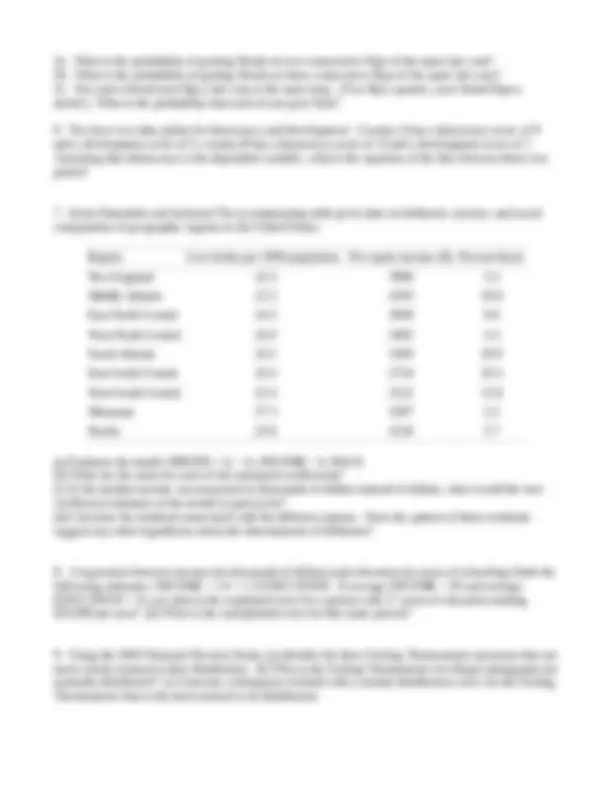



Study with the several resources on Docsity

Earn points by helping other students or get them with a premium plan


Prepare for your exams
Study with the several resources on Docsity

Earn points to download
Earn points by helping other students or get them with a premium plan
Community
Ask the community for help and clear up your study doubts
Discover the best universities in your country according to Docsity users
Free resources
Download our free guides on studying techniques, anxiety management strategies, and thesis advice from Docsity tutors
Homework assignments for a graduate-level political science course (pols 581) focusing on statistical analysis. Topics include calculating expected frequencies, interpreting chi-square statistics, determining probabilities, analyzing residuals, and performing simple linear regression. Students are required to work through problems related to crosstabs, gun ownership, union households, and income, as well as birthrates and education.
Typology: Assignments
1 / 2

This page cannot be seen from the preview
Don't miss anything!


POLS 581 Homework 5 Fall 2008 This homework may be done by hand or turned in as a PDF. Show your work for all calculations.
5a. What is the probability of getting Heads on two consecutive flips of the same fair coin? 5b. What is the probability of getting Heads on three consecutive flips of the same fair coin? 5c. You and a friend each flip a fair coin at the same time. (You flip a quarter; your friend flips a nickel.) What is the probability that each of you gets Tails?